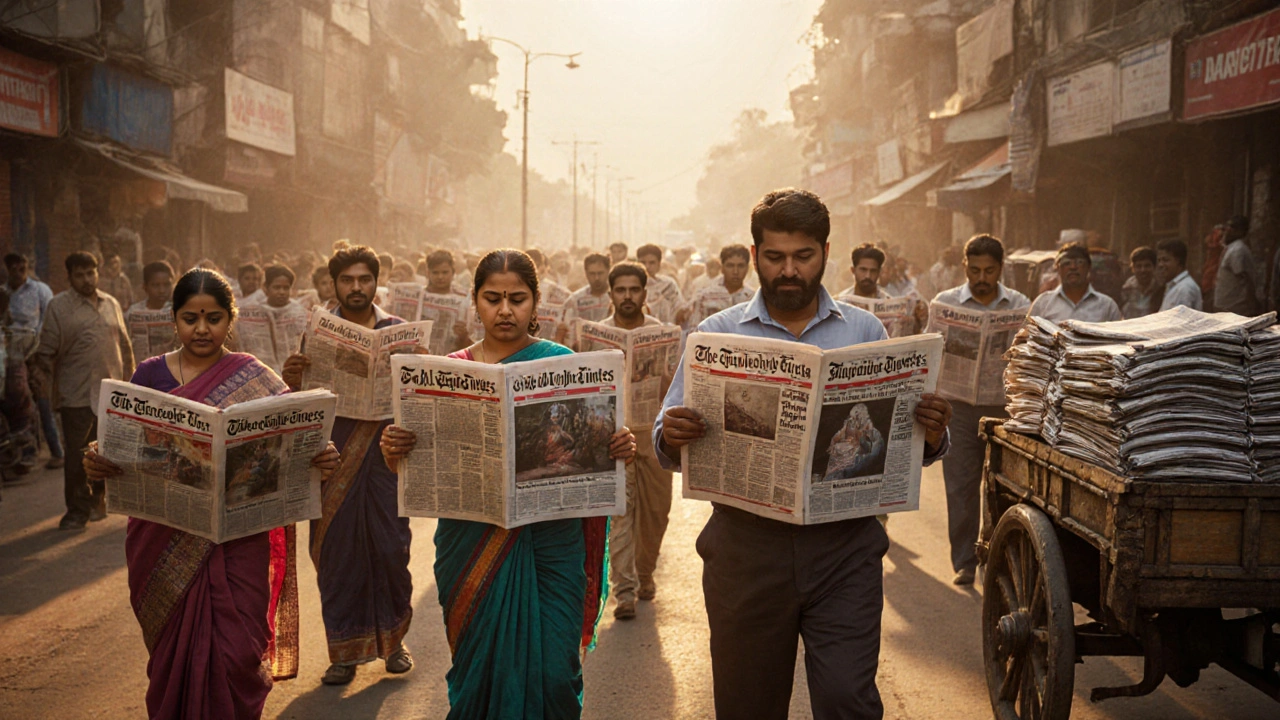The Times of India
When you think of news in India, The Times of India, India's largest-circulation English-language newspaper, founded in 1838 and still shaping public discourse today. Also known as TOI, it's not just a paper—it's a daily ritual for over 3 million readers across cities, towns, and villages. It doesn’t just report news; it sets the agenda. From Delhi’s latest policy moves to Mumbai’s traffic chaos, from village water shortages to Bollywood’s biggest releases, The Times of India decides what India talks about next.
Its reach extends beyond headlines. Indian media, a fragmented but powerful ecosystem of print, digital, and broadcast outlets, often mirrors or reacts to TOI’s coverage. When TOI runs a deep dive on farmer protests or a front-page story on a new tech startup in Bengaluru, other outlets follow. Meanwhile, Indian news, the broad landscape of political, economic, and social reporting across the country. leans heavily on TOI for context. It’s the paper that breaks stories on election results before the Election Commission even releases official numbers. It’s the one that covers the rise of regional dialects in digital ads or the sudden drop in diesel prices in Rajasthan—details that matter to real people, not just politicians.
But it’s not all politics. Bollywood news, the constant stream of celebrity gossip, film releases, and industry drama that dominates weekend editions. is a major pillar of TOI’s appeal. A star’s wedding, a movie’s box office opening, or a director’s public feud with a streaming platform? You’ll find it first on TOI’s entertainment pages. And it’s not fluff—it’s culture, and culture is politics in India. Who gets spotlighted, who gets ignored, who gets portrayed as a hero or villain? TOI decides.
What you’ll find in this collection isn’t just articles about The Times of India—it’s a mirror of the issues it covers. You’ll see how its reporting on homelessness in the UK connects to its silence on rural debt in Bihar. You’ll find pieces that question whether its bias leans right, like the Daily Mail, or if it’s simply reflecting the views of its urban, middle-class readers. You’ll read about how digital disruption is forcing TOI to rethink its print-first model, just like newspapers everywhere. And you’ll see how its coverage of COVID variants in London shows its global lens—even when the story isn’t in India.
This isn’t a fan page. It’s a critical look at a media giant that helped build modern India’s conversation—and now faces the same pressures as every newsroom: trust, relevance, and survival. The stories below don’t just report on TOI. They show what happens when a newspaper becomes the voice of a nation.
What is the most read newspaper in the world?
The Times of India is the most read newspaper in the world, with over 3.3 million daily print copies. It leads globally due to its affordability, wide reach across India, and deep cultural integration - far ahead of Western papers like The New York Times.
